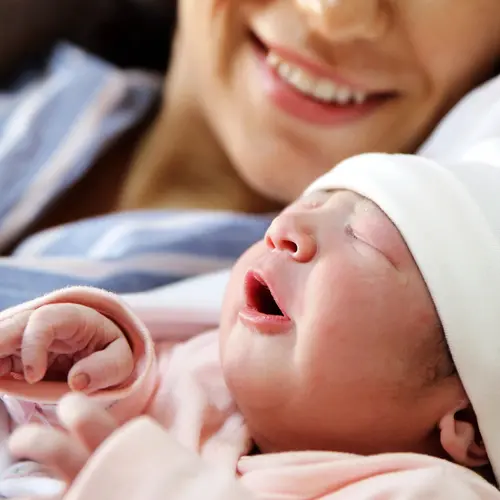One of the most exciting parts of pregnancy is preparing a room for your new baby. You pick out the perfect decorations and matching crib set. A lot of crib bedding sets come with bumper pads that tie around the rails of your crib, but are they safe for your infant?
Are Crib Bumpers Safe?
Crib bumpers are designed to keep your baby's arms and legs from getting caught in between crib railing during sleep. However, crib bumpers are not considered safe for your newborn or infant. While they’re not banned, the Consumer Product Safety Commission issued a warning in 2016 about the dangers of crib bumpers.
Crib bumpers, along with any other soft, plush, or padded object in a crib, pose a suffocation risk. These items can be dangerous because your baby could roll onto them and not be able to roll themselves away.
Safe Sleep Guidelines
The American Academy of Pediatrics offers guidelines for safe sleep that are based on studies and research of infant death and how it can be prevented. Generally speaking, you should follow the ABCs of safe sleep, meaning your baby should be alone on its back in a crib.
Alone. No one else should sleep with your baby. This also means that there should be no additional blankets, toys, pillows, or crib bumpers present.
Back. The safest position for a newborn is on its back. Infants are not yet strong or aware enough to move their heads if they can’t breathe.
Crib. Your infant should sleep in a crib, bassinet, or playpen that is specifically designed for infant sleep. Do not let your baby sleep in a swing or other play device.
It is important to note that while experts recommend infants should sleep separately in their own bed, some parents, especially breastfeeding mothers, like to keep babies close in the same room. Being nearby gives you a better chance of hearing if something is wrong while your baby is asleep, and can make late-night breastfeeding easier.
Other Considerations for Safe Sleep
Safe sleep positions. Newborns should be placed on their backs. As babies age, they may move from side to side. They should be placed back on their backs until they are able to roll from side to side and from tummy to side by themselves.
Safe sleep surface. You may be tempted to make sure your baby feels comforted with blankets or plush mattresses. These items can be suffocation risks, so avoid using blankets or comforters in the crib. Instead, use a tightly fitted sheet and make sure the surface of the mattress is firm, not soft. If your baby makes an indention in the mattress while lying on it, the mattress is too soft.
Comfortable temperature. Ensuring your baby's room is a comfortable temperature will help them sleep through the night. Blankets are not recommended since they pose the risk of suffocation, but if you’re worried about your baby being too cool at night, use socks or warm footie pajamas. Use lighter, more breathable fabrics when it gets warmer.
Use a pacifier. Some studies show that offering a pacifier during naps and bedtime helps prevent Sudden Infant Death Syndrome (SIDS), giving you more peace of mind that your baby is safe.
Breastfeed if possible. Breast milk provides the best nutrition for your baby, and is associated with a lower risk of SIDS. If you can’t breastfeed directly from your body, pump and bottle-feed. Your breastmilk is designed to meet the needs of your little one and provides antibodies that help fight off illness and infection.
Avoid smokers. Second-hand and third-hand smoke contribute to an increased risk of SIDS for your baby. Second-hand smoke is when your baby breathes the air directly while someone is actively smoking nearby. Third-hand smoke is the residue that lingers on walls, toys, and clothes.


